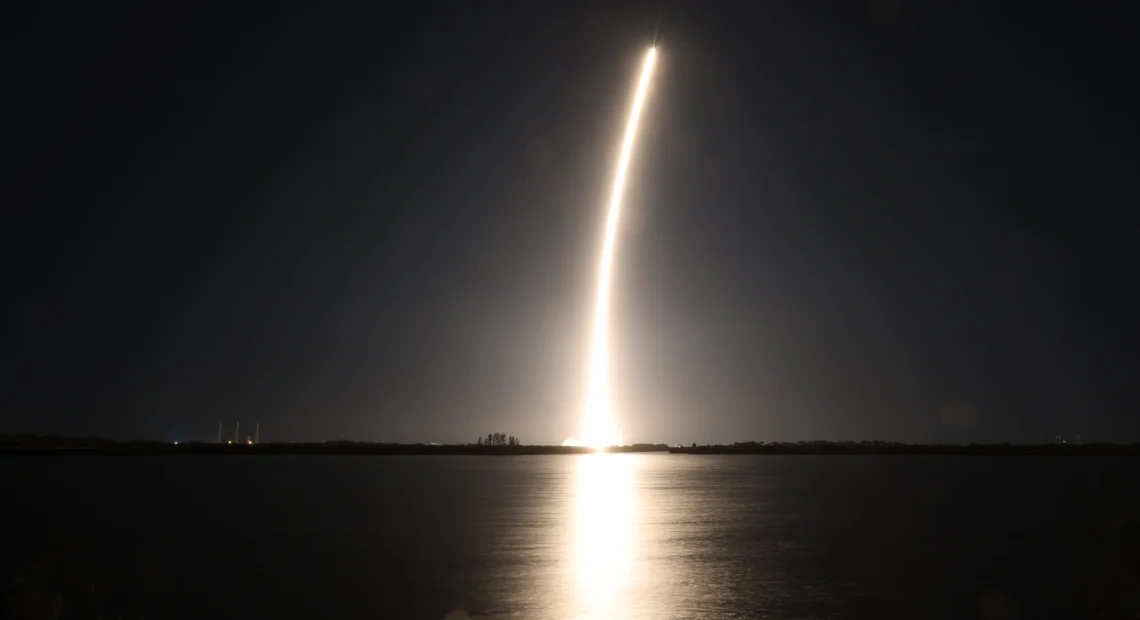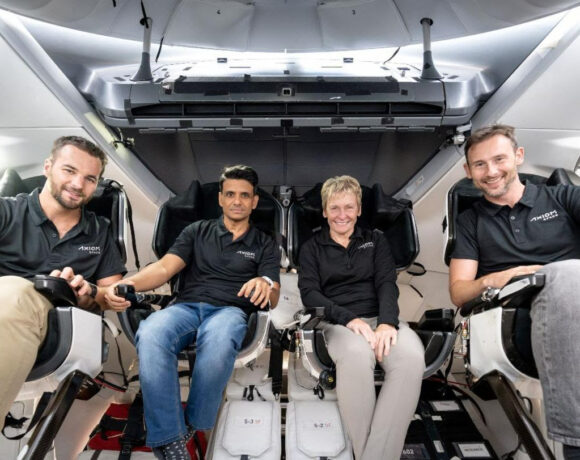NASA’s Blue Ghost Mission One sets course for lunar exploration

With unique science and technology
A suite of cutting-edge scientific investigations and technology demonstrations is en route to the Moon, where it will play a key role in NASA’s Artemis programme. The mission, carried by Firefly Aerospace’s Blue Ghost lander, launched aboard a SpaceX Falcon 9 rocket on January 15, 2025, from Kennedy Space Center in Florida. It targets a lunar landing on March 2, 2025.
The flight marks Firefly’s first Commercial Lunar Payload Services (CLPS) mission for NASA, and it will deliver vital tools to test technologies for future human exploration of the lunar surface.
NASA Deputy Administrator Pam Melroy emphasised the mission’s significance: “This mission embodies the bold spirit of NASA’s Artemis campaign—a campaign driven by scientific exploration and discovery. Each flight we are part of is vital in the larger blueprint to establish a responsible, sustained human presence on the Moon, Mars, and beyond.”
The Blue Ghost lander carries 10 scientific payloads to gather essential data about the Moon’s environment. These experiments will help inform future lunar missions, especially as NASA prepares for the first human return to the lunar surface under the Artemis programme. The collected data could also enhance our understanding of space weather and its impact on Earth.
Nicola Fox, Associate Administrator for NASA’s Science Mission Directorate, highlighted the importance of American companies like Firefly in the mission’s success. “We learned many lessons during the Apollo Era which informed the technological and science demonstrations aboard Firefly’s Blue Ghost Mission 1 – ensuring the safety and health of our future science instruments, spacecraft, and, most importantly, our astronauts on the lunar surface,” Fox said.
This mission will test lunar drilling technologies, regolith sample collection capabilities, and various instruments designed to study the Moon’s environment while addressing critical challenges for human exploration. Some of the key experiments include:
Lunar Instrumentation for Subsurface Thermal Exploration with Rapidity (LISTER): This payload will measure the heat flow from the interior of the Moon by assessing the thermal gradient and conductivity of the lunar subsurface. It aims to drill up to 10 feet beneath the surface to understand the Moon’s internal thermal properties—lead organisation: Texas Tech University.
Lunar PlanetVac (LPV): This innovative regolith-sampling system will use bursts of compressed gas to collect lunar soil and send it back to Earth for analysis. This technology will help lay the groundwork for future lunar resource extraction efforts—lead organisation: Honeybee Robotics.
Next Generation Lunar Retroreflector (NGLR): This instrument will reflect laser beams sent from Earth, enabling precise measurements of the Moon’s distance from Earth and providing data on the Moon’s interior structure. The University of Maryland is the lead organisation.
Regolith Adherence Characterisation (RAC): This investigation will study how regolith sticks to materials exposed to the lunar surface to address the challenge of lunar dust. By understanding how dust accumulates on spacecraft surfaces, NASA hopes to improve the design of future lunar equipment. The lead organisation is Aegis Aerospace.
Radiation-Tolerant Computer (RadPC): This experiment aims to demonstrate a computer capable of withstanding space radiation. The technology will help safeguard future spacecraft and astronaut health. Montana State University is the lead organisation.
In addition to these payloads, several other critical technologies are being tested, such as the Electrodynamic Dust Shield (EDS), a self-cleaning technology designed to prevent harmful dust accumulation, and the Lunar Environment Heliospheric X-ray Imager (LEXI), which will capture X-ray images of the interaction between solar wind and Earth’s magnetic field.
Blue Ghost Mission 1 will also test the Lunar GNSS Receiver Experiment (LuGRE). This experiment aims to enable future lunar spacecraft to use Earth-based navigation systems to pinpoint their location, a first for lunar exploration.
These payloads represent a significant leap in our understanding of the Moon and are integral to NASA’s long-term plans for human exploration. Chris Culbert, program manager for NASA’s CLPS initiative, said, “With 10 NASA science and technology instruments launching to the Moon, this is the largest CLPS delivery to date, and we are proud of the teams that have gotten us to this point.”
Once the Blue Ghost lander reaches the Moon, it will land near Mons Latreille, a volcanic feature within the Mare Crisium basin. This location was chosen because it could reveal new geological insights into the Moon’s history, especially its volcanic activity.
The data collected from the payloads will contribute to broader efforts to understand planetary processes and search for resources, such as water, that could support long-term human exploration. These insights are critical for future lunar missions and for NASA’s broader ambitions to establish a sustainable human presence on Mars and beyond.
As Firefly’s Blue Ghost lander begins its journey to the Moon, NASA and its commercial partners continue to pave the way for the next era of lunar exploration. This will set the stage for the first Artemis astronauts to step foot on the lunar surface later this decade.
Image: A SpaceX Falcon 9 rocket carrying Firefly Aerospace’s Blue Ghost Mission One lander soars upward after liftoff from Launch Complex 39A at NASA’s Kennedy Space Center in Florida on January 15, 2025, as part of NASA’s CLPS (Commercial Lunar Payload Services) initiative. The Blue Ghost lander is carrying 10 NASA science and technology instruments to the lunar surface to understand the Moon further and help prepare for future human missions. Credit: NASA/Frank Michaux













